Visibility groups
When managing a team, there will be occasions when you’ll want certain users not to see specific information in your account. To allow you to categorize your users and dictate what items they’ll be allowed access to see, Pipedrive offers visibility groups.
While permission sets in Pipedrive determine what actions users in your account can perform, visibility groups dictate what information your users can view in Pipedrive.
Configuring your visibility groups
To begin configuring your visibility groups, go to Settings > Manage Users > Visibility groups.
The number of visibility groups you have is dependent on which subscription plan your company account is on.
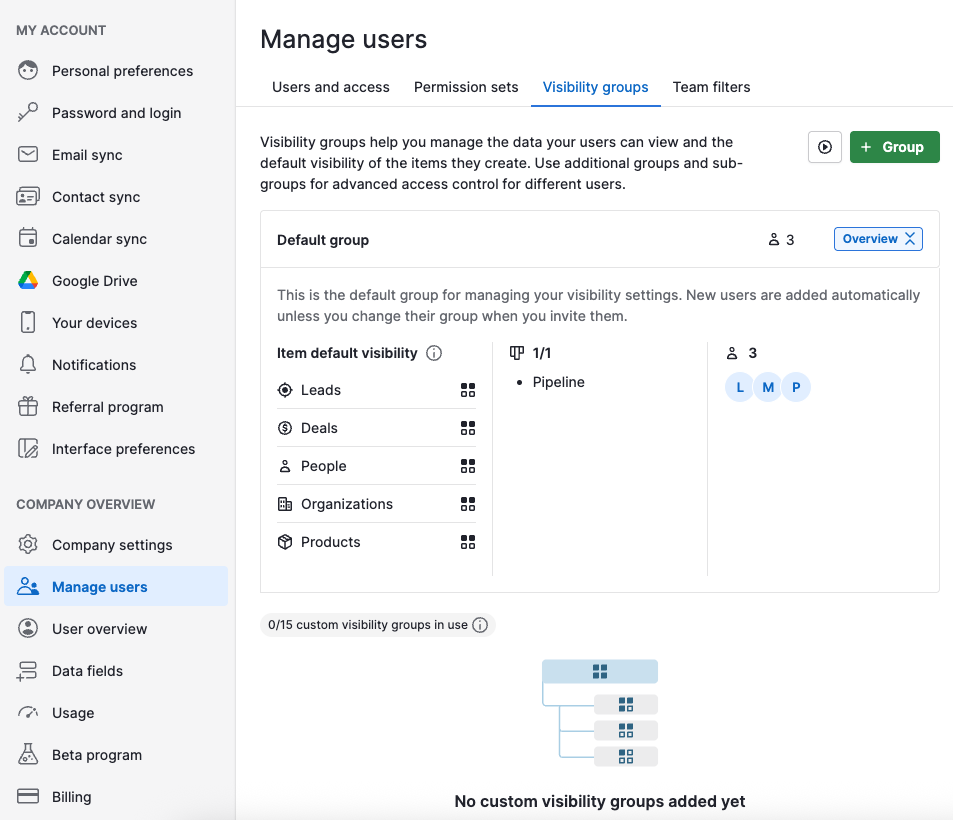
Lite and Growth plans
If you‘re on the Lite or Growth plan, you’ll have the default group for all of your users.
You can configure the visibility of your leads, deals, people, organizations and products to one of two options:
Item owner | Can view and edit: owner, admins of the app, followers, parent visibility group members. |
| All users | Can view and edit: everyone in the company. |
Premium, Ultimate and Enterprise plans
If you’re on the Premium, Ultimate or Enterprise plan, you can create additional visibility groups – and sub-groups, if needed – for more detailed visibility breakdowns for the users in your Pipedrive company account.
Item owner | The item can be viewed and edited only by the owner, followers, admins of the app and parent visibility group members. |
Item owner’s visibility group | The item can be viewed by any user in the item owner's visibility group, as well as admin users. |
Item owner’s visibility group and sub-groups | App admins and any user in the same, above, or below visibility groups can see items created by users in this group. |
All users | All users in the Pipedrive company can view and edit items created |
To add a visibility group, click ”+ Group” on the right-hand side of the screen.

Add the name of the custom visibility group, the description and the parent group, in case there’s any. Then save the changes.
To add a user to a visibility group, open the visibility group settings and search for that user in the search bar. A Pipedrive user can only be associated with one visibility group at a time.
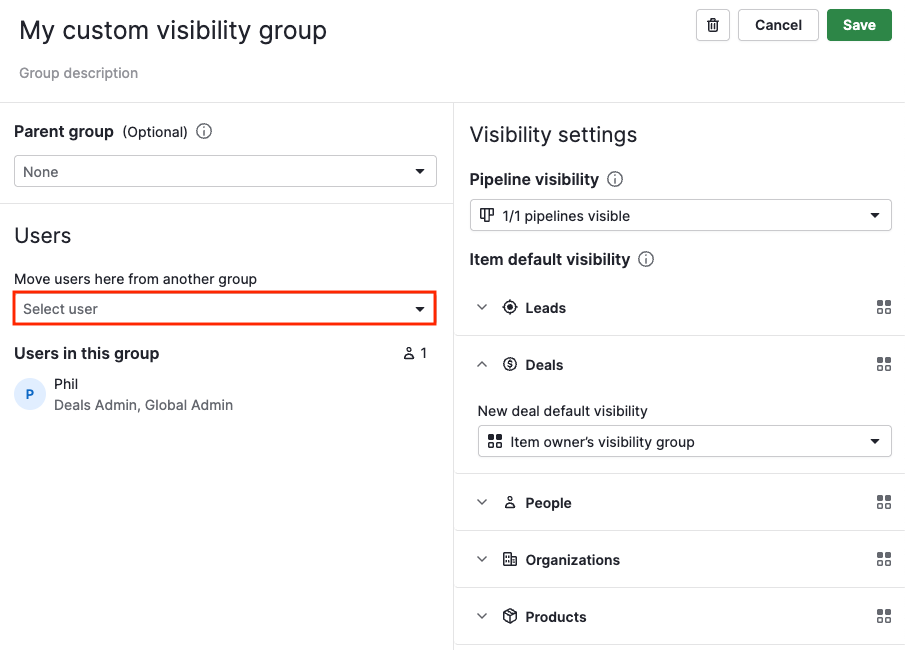
To remove a user from a visibility group, click the “X” mark next to the user's name within the visibility group. Then, the user will be transferred to the default group.
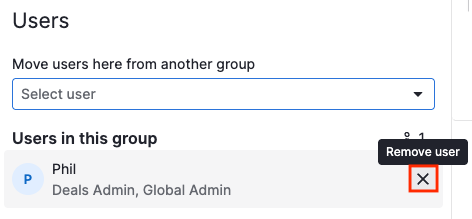
Pipeline Visibility
Users with account settings access can edit the pipeline visibility settings for users in the visibility groups by deselecting the pipelines that each group shouldn’t be able to see. By default, all visibility groups will have access to all pipelines.
Visibility groups that don’t have access to specific pipelines won’t be able to see any trace of the pipeline nor deals inside that pipeline in Pipedrive, as the pipeline will be completely hidden from their accounts.
Users with deals admin permission set will always have access to all pipelines and deals, regardless of the visibility group settings. Learn more about pipeline visibility in this article.
How many visibility groups can I have?
The number of custom visibility groups you can have depends on your plan.
Plan | Number of groups |
Lite and Growth | N/A |
Premium | 15 |
Ultimate | 25 |
Enterprise | 150 |
Visible-to settings in Pipedrive
The Visible-to settings for an item in Pipedrive – like a deal, lead, contact person, organization or product – dictate that item’s specific visibility. An item’s visibility can differ from the visibility set by visibility group ownership. The visible-to settings can be edited in any detail view or in the list view.
Similar to the information above, the visible-to options are the same as the visibility options specific to your Pipedrive plan.
- Deal or contacts detail view:
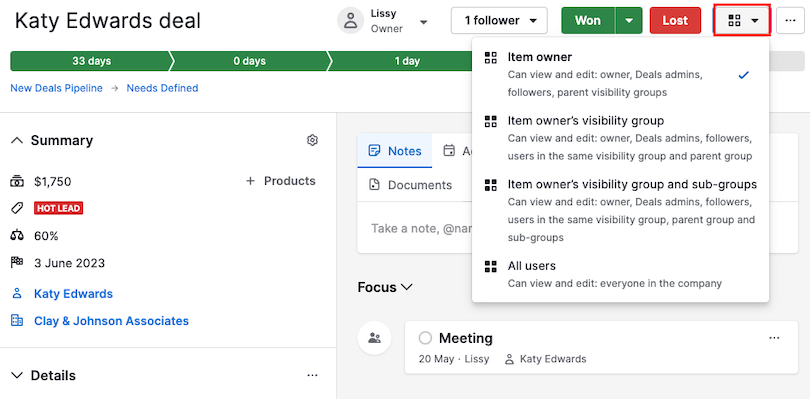
- Leads detail view:
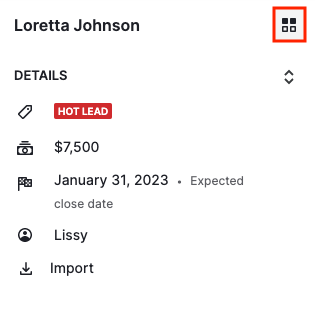
- List view:
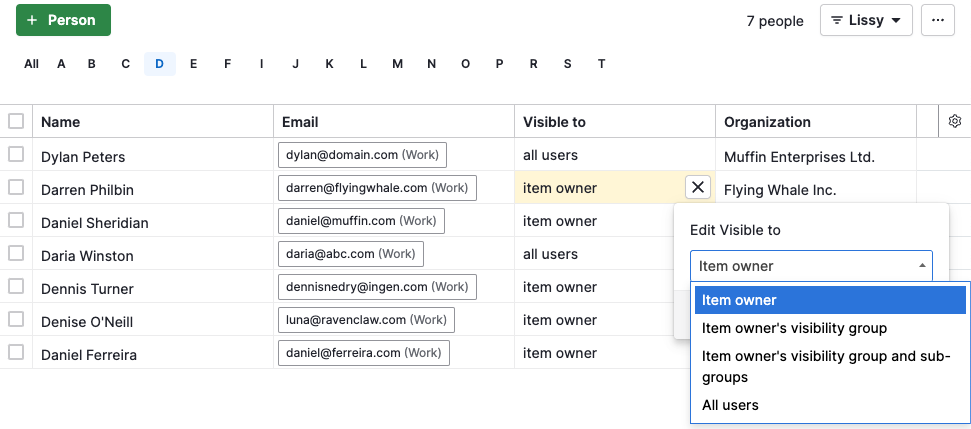
Ownership
Ownership establishes who owns the item in question. If you own an item in Pipedrive, you have permission to both see and edit it.
Every item imported will be marked as being owned by the user who created it unless otherwise marked as being owned by another user.
If you need to change owner settings, they can be controlled in the detail view or list view, similar to the visible-to setting noted above.
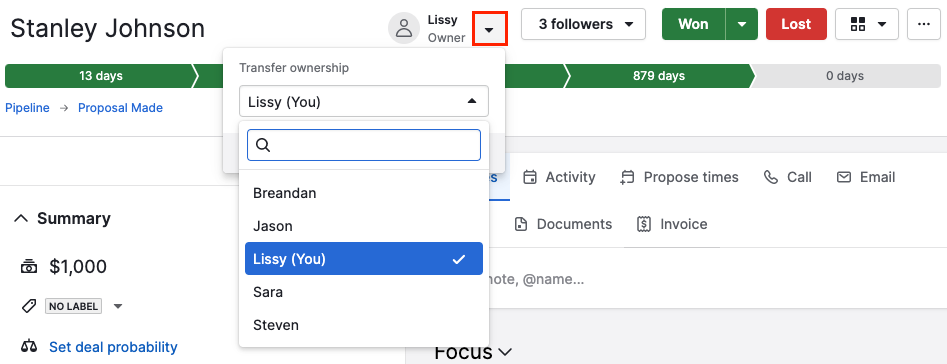
Was this article helpful?
Yes
No